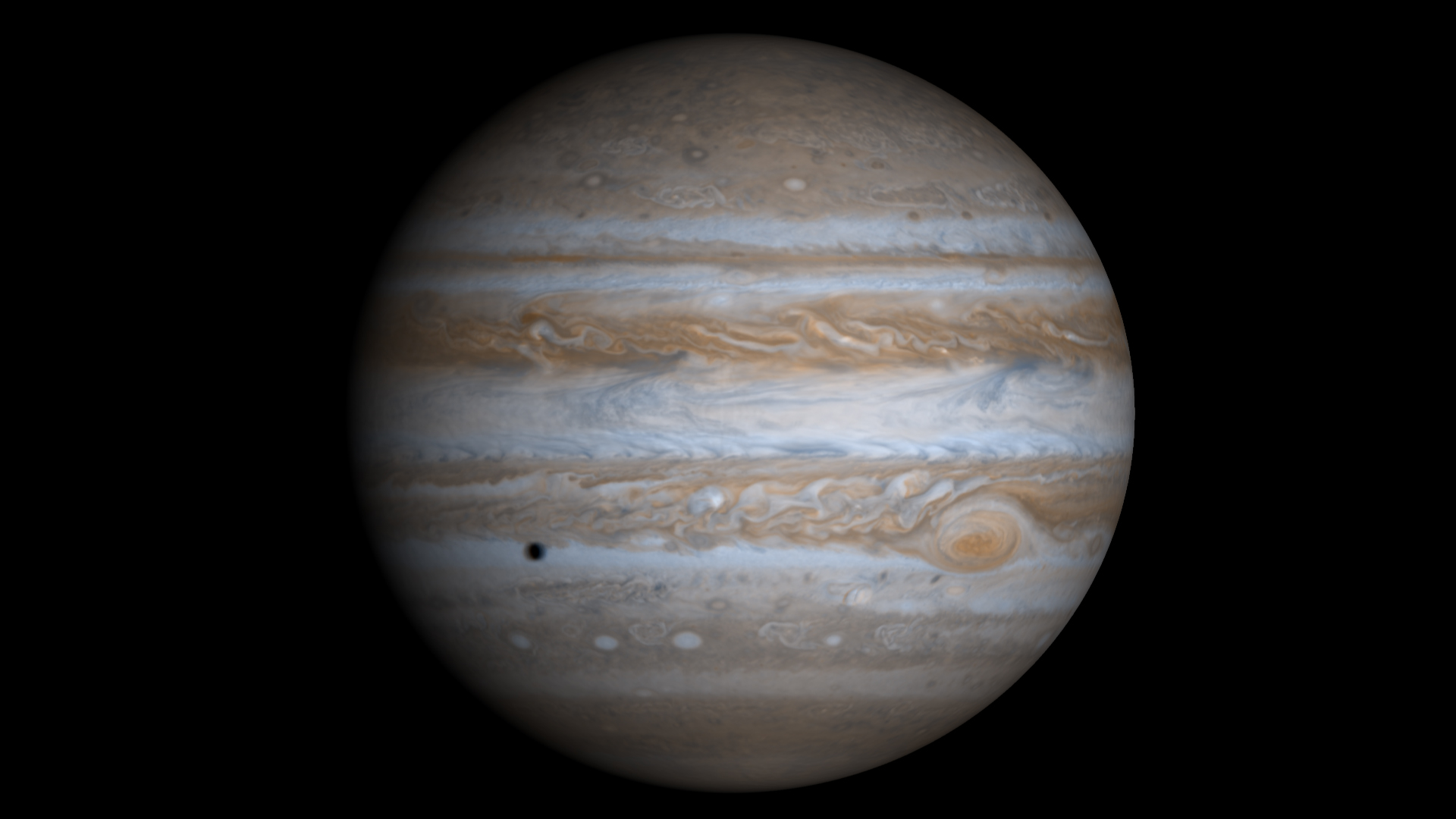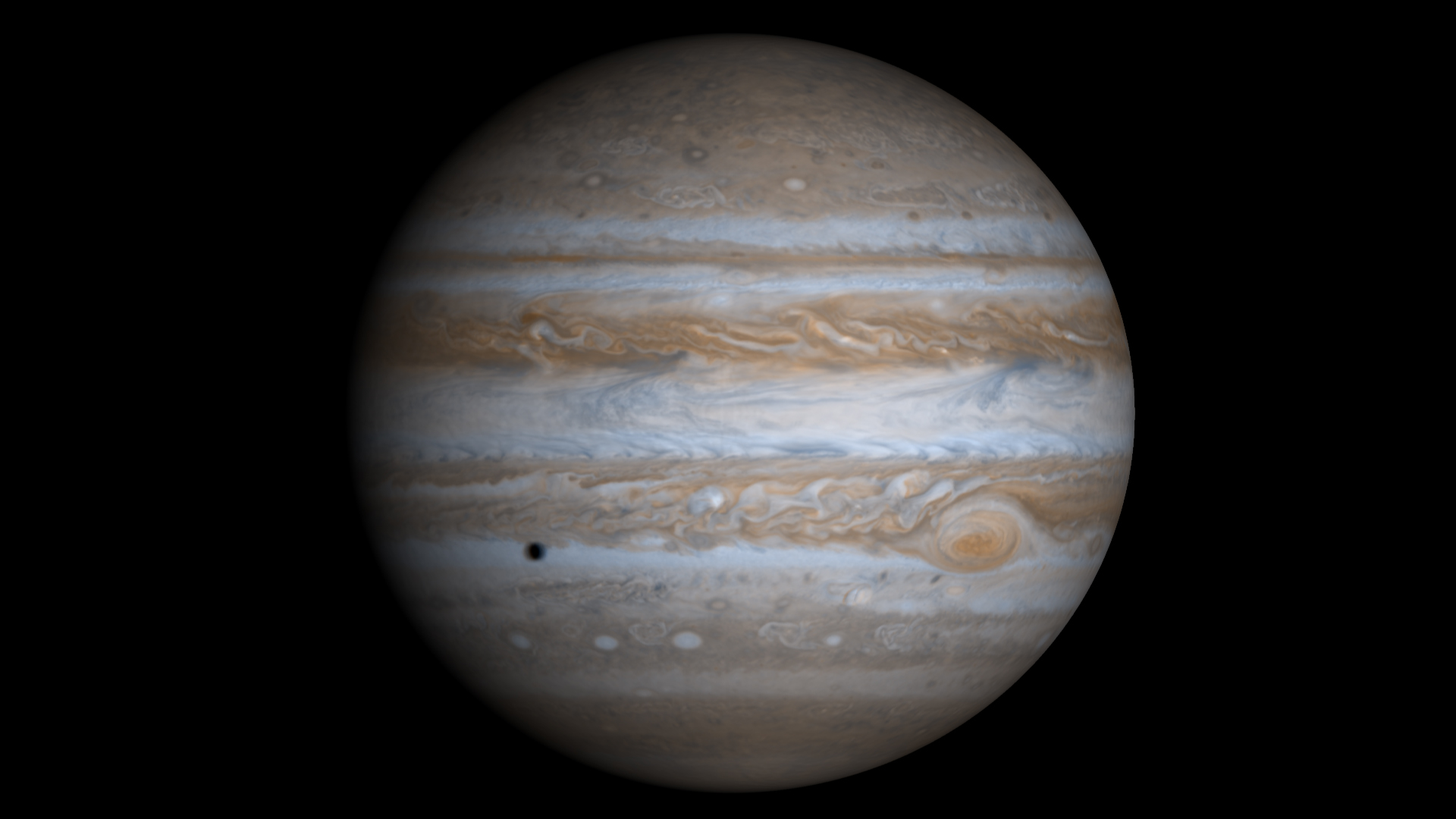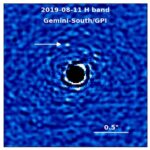Now Reading: Jupiter used to be twice as big as it is now — it could have held 2,000 Earths
-
01
Jupiter used to be twice as big as it is now — it could have held 2,000 Earths
Jupiter used to be twice as big as it is now — it could have held 2,000 Earths


Long before it became the giant planet we see today, Jupiter was even bigger and had a much stronger magnetic field, according to a new study that looked back in time to reveal what the world was like in its early years.
The new calculations, described in a paper published Tuesday (May 20) in the journal Nature Astronomy, suggest that just 3.8 million years after the solar system’s first solid objects formed, Jupiter was twice its current size and had a magnetic field at least 50 times stronger than what we see today.
“Our ultimate goal is to understand where we come from, and pinning down the early phases of planet formation is essential to solving the puzzle,” Konstantin Batygin, a professor of planetary science at the California Institute of Technology, who led the new study, said in a statement. “This brings us closer to understanding how not only Jupiter but the entire solar system took shape.”
To uncover Jupiter’s ancient planetary conditions, Batygin and his team largely bypassed the assumptions of existing planetary formation models, such as the rate at which primordial gas was gathered by young planets. Instead, they focused on two of Jupiter’s lesser-known moons, Amalthea and Thebe.
These small satellites orbit very close to Jupiter and follow slightly tilted paths that scientists suspect have remained unchanged since the solar system’s early days. By analyzing those subtle orbital tilts, the researchers were able to reverse-engineer Jupiter’s primordial size and magnetic strength, according to the new study.
Related Stories:
The team’s calculations indicate that young Jupiter had a radius nearly twice its current size, with a volume large enough to hold more than 2,000 Earths. In the present day, the planet’s volume can fit 1,321 Earths.
Although the study doesn’t directly explore how such a massive Jupiter would have influenced the early solar system, it emphasizes that the planet’s formation and early evolution played a “pivotal role” in shaping the solar system’s overall architecture.
According to Batygin and his team, the new findings also capture Jupiter at a crucial point in time, when the cloud of gas and dust left over from the sun’s formation evaporated. This marked the end of planet formation and locked in the basic layout of the solar system.
“What we’ve established here is a valuable benchmark,” Batygin said in the statement. “A point from which we can more confidently reconstruct the evolution of our solar system.”
Stay Informed With the Latest & Most Important News
Previous Post
Next Post
-
 012024 in Review: Highlights from NASA in Silicon Valley
012024 in Review: Highlights from NASA in Silicon Valley -
 02Panasonic Leica Summilux DG 15mm f/1.7 ASPH review
02Panasonic Leica Summilux DG 15mm f/1.7 ASPH review -
 03From Polymerization-Enabled Folding and Assembly to Chemical Evolution: Key Processes for Emergence of Functional Polymers in the Origin of Life
03From Polymerization-Enabled Folding and Assembly to Chemical Evolution: Key Processes for Emergence of Functional Polymers in the Origin of Life -
 04How New NASA, India Earth Satellite NISAR Will See Earth
04How New NASA, India Earth Satellite NISAR Will See Earth -
 05And Thus Begins A New Year For Life On Earth
05And Thus Begins A New Year For Life On Earth -
 06Astronomy Activation Ambassadors: A New Era
06Astronomy Activation Ambassadors: A New Era -
07SpaceX launch surge helps set new global launch record in 2024




















